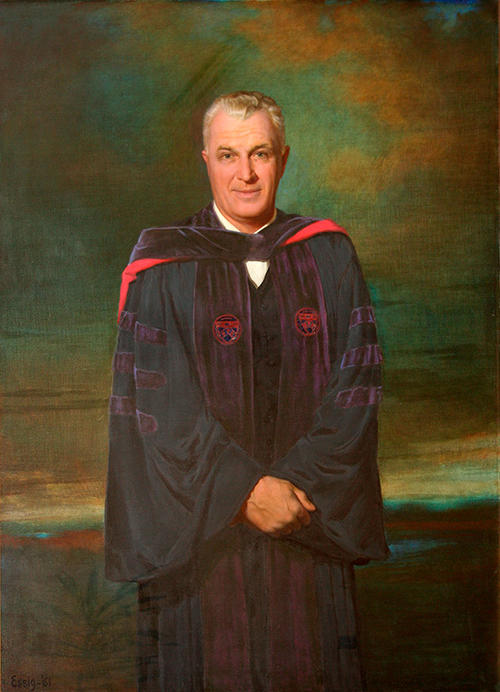Gaylord Probasco Harnwell
President (1953-1970)
-
Assistant and after 1936, Associate Professor of Physics, Princeton University, 1929-38
-
Professor of Physics, University of Pennsylvania, 1938-1970 (with leave of absence, 1942-46)
-
Chair, Department of Physics, University of Pennsylvania, 1938-1953 (with leave of absence, 1942-46)
-
Director, University of California Division of War Research, U.S. Navy Radio and Sound Laboratory, 1942-46, with Medal of Merit awarded him by the U.S. Navy in 1947 for advances in submarine detection devices, particularly in sonar technology
-
Editor, Review of Scientific Instruments, 1941-53
(published by the American Institute of Physics) -
Editorial Director, Physics Today, 1951-53
-
Author, Russian Diary (University of Pennsylvania Press, 1960). This book described his travels there.
-
Author, Educational Voyaging in Iran (University of Pennsylvania Press, 1962). This book described his advising on the establishment of an American-style university at Shiraz.

University history during the Harnwell administration
1953 |
The administration of President Gaylord P. Harnwell initiated "The Educational Survey," a major institutional self-study and long-range planning project. |
1954 |
Penn and seven other research universities established the Ivy League. |
1958 |
The Annenberg School for Communication established as a graduate professional school. |
1959 |
The Educational Survey was concluded with the publication of several studies and recommendations on educational policy, University administration, and athletics, including a summation by President Harnwell, titled "Assaying a University." The Educational Survey subsequently proved to be the model for modern strategic planning at Penn. |
1961 |
The Graduate School of Education took its modern name and became a graduate professional school. |
1961 |
The Graduate School of Fine Arts took its modern name and became a graduate professional school. |
1962 |
Development Program of the Sixties launched. |
1963 |
The Institute of Contemporary Art established. |
1965 |
Laboratory for Research in the Structure of Matter (LRSM) completed and occupied. |
1970 |
Achievements of the seventeen-year Harnwell administration included "the University's development from a regional university to a major national force in research with world-wide outreach. His administration was the time of the deliberative diversification of the student body to include students from all walks of life; of dramatic changes in faculty hiring to counter what had been labeled ‘inbreeding'; and of the founding of the Faculty Senate and later of other mechanisms that brought consultative groups together. Physical expansion alone was monumental: 93 projects were completed and another 38 designed during his administration. In the neighborhood to which Penn committed itself after deciding not to move to Valley Forge, he helped found the University City Science Center and the West Philadelphia corporation, and to put through a guaranteed mortgage program to draw faculty back from the suburbs. For the sixties, the $93 million capital campaign of the Harnwell era was one of the largest development campaigns to be dared in the country – and went over goal." (Almanac, 20 April 1982) |
Penn Presidents
Biographical sketches of Penn Presidents (including Acting and Interim Presidents) and historically significant aspects of University history during each administration.